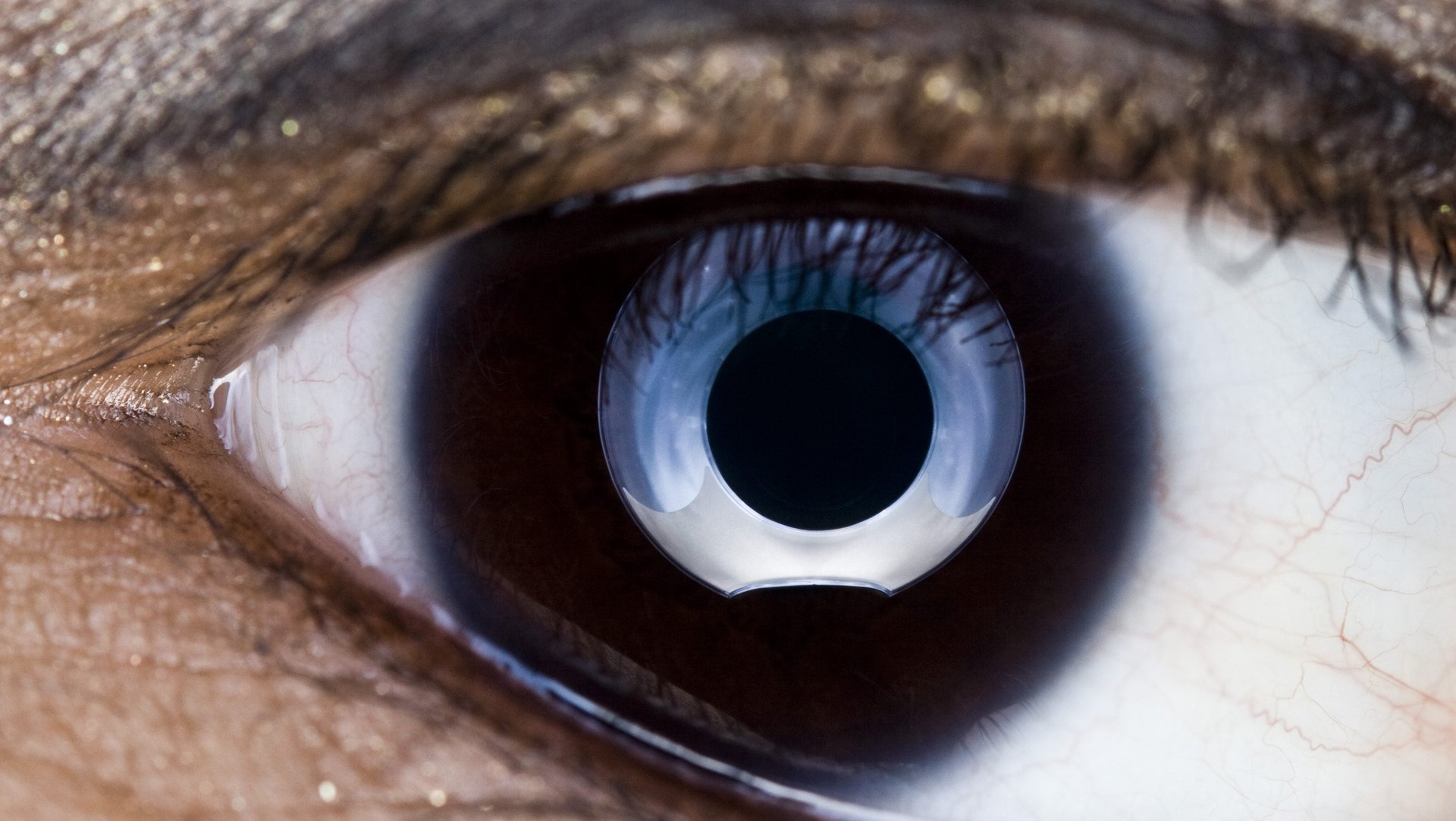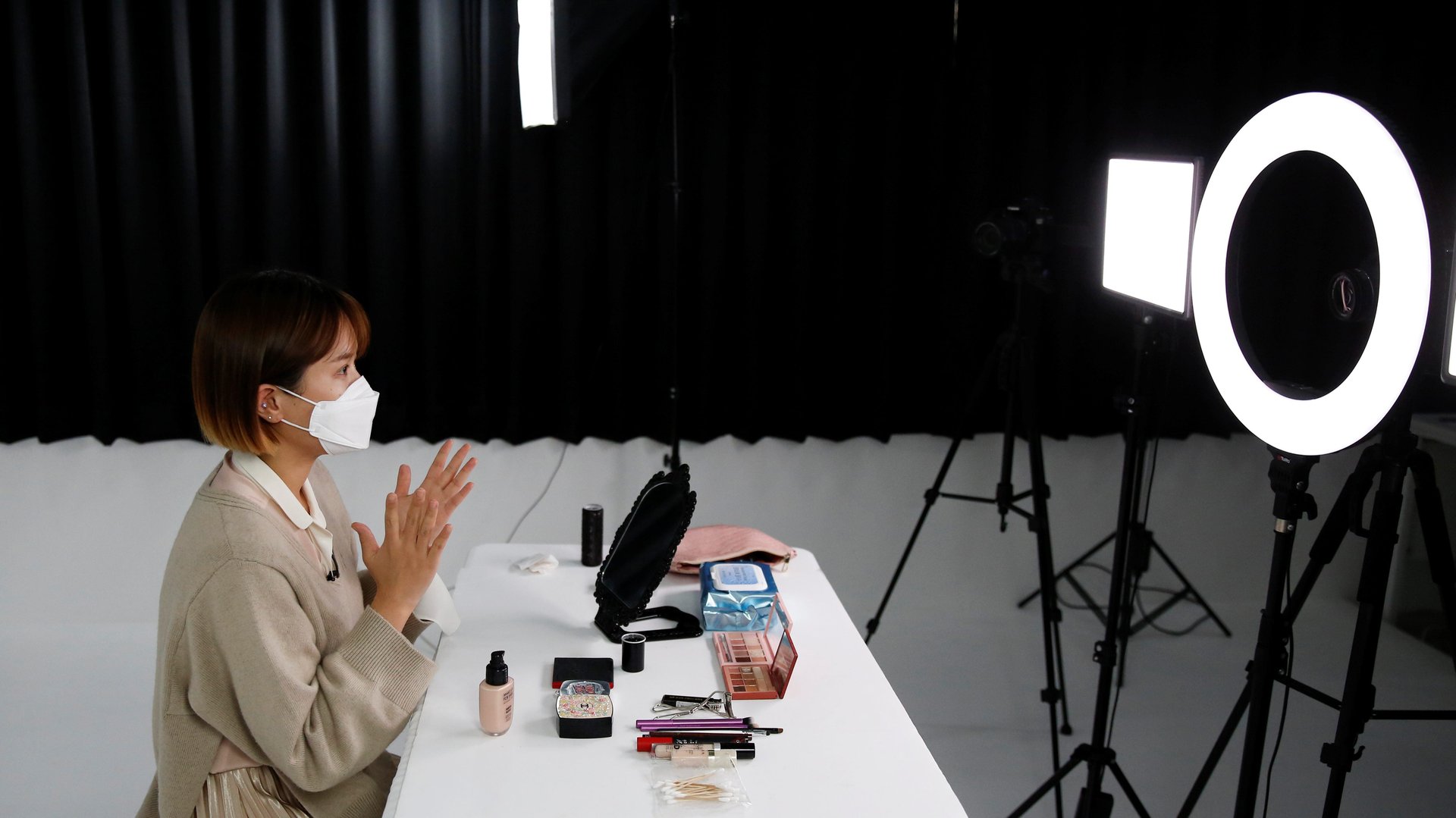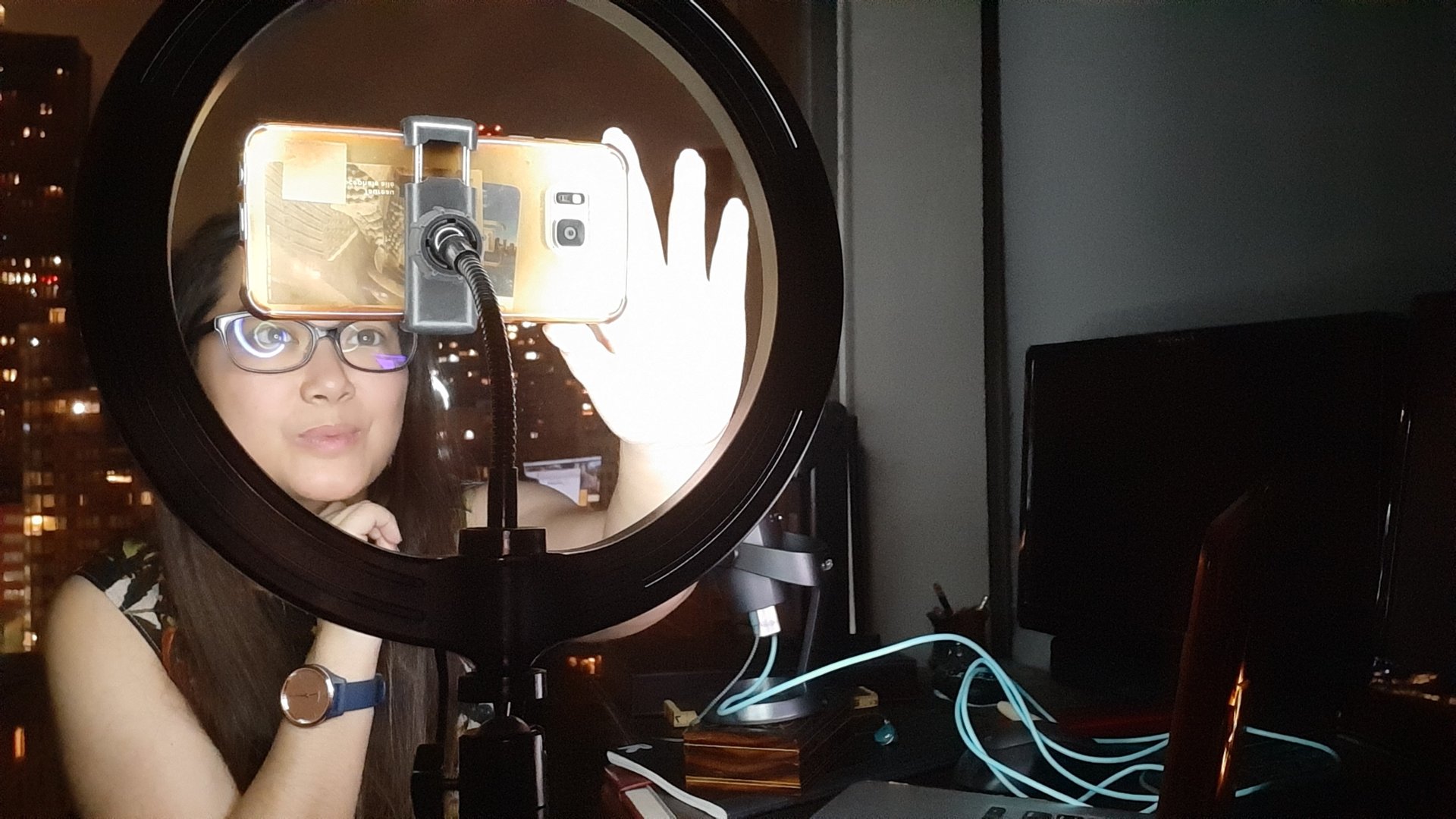Seriously, it’s time to get a ring light
The ring light—a face-flattering doughnut of light commonly used in portrait photography and YouTube makeup tutorials—has emerged as a crucial component of the remote worker kit. But unlike other work-from-home investments, like an ergonomic chair, a computer microphone, or a printer, shopping for a ring light can feel frivolous, a task for those of us who are vain enough to care this much about how we present ourselves on video.


The ring light—a face-flattering doughnut of light commonly used in portrait photography and YouTube makeup tutorials—has emerged as a crucial component of the remote worker kit. But unlike other work-from-home investments, like an ergonomic chair, a computer microphone, or a printer, shopping for a ring light can feel frivolous, a task for those of us who are vain enough to care this much about how we present ourselves on video.
That’s nonsense though. Good lighting is a signifier of proficiency, as Amanda Mull argues in the Atlantic:
“People in all kinds of professions who have sequestered themselves in basements or odd corners of their apartment to avoid family or roommates have now had almost a year of Photography 101, and they have learned something important: You can’t rely on natural light every day or in every space. Since many workers spend much of their time on Zoom quietly inhabiting their own little box, telegraphing professionalism means controlling that space to the best of their ability.”
The virtue of good lighting is backed by science. A 2001 study published in the Journal of Neuroscience, for instance, suggests that seeing poorly lit images induces the body to release melatonin, and in effect, exacerbates feelings of sleepiness and boredom associated with Zoom fatigue syndrome.
The hue or “color temperature” of your on-screen image matters, too—a factor that can be adjusted with a click of a button on many ring light models. For presenters, adjusting the warmth or coolness of their lights can help set the tone for a meeting.

First used by dentists to peer into their patients’ mouths in the 1950s, a ring light is a DIY solution to better video conferencing. Unlike a desk lamp that tends to cast harsh shadows, it creates a soft, even halo around the presenter’s face, which helps direct the audience’s focus. There’s a range of options available—including the $200 Diva Ring Light geared for beauty tutorials or $300 models preferred by professional photographers. For Zoom calls, a standard $20 desktop ring light should do. (There are rectangular-shaped lighting solutions, too, if circles just aren’t your style.)
The dread of “ring light” eyes
Blame it on a longing for sprezzatura—the Italian word for looking effortlessly put together—but some skeptics live in fear of “ring light eyes.” The telltale white halo reflected on the pupils of a person using a ring light is generally desired by fashionistas, but dreaded by professionals who don’t want to reveal how much they’re fussing over their appearance during a pandemic year in which many are not wearing pants while working from home. Spotting a ring light in a colleague’s eyes indeed can be seen as a gaffe.
Avoiding ring light eyes is particularly tricky for people who wear glasses. Ida Anita del Mundo, a filmmaker and university professor who uses a ring light in her virtual classes, advises experimenting with the light’s placement to find the optimal angle. “I avoid the reflection on my glasses by tilting my head slightly downward,” she explains. “You can also try raising your tripod so it’s higher than eye level, then tilt the ring light down slightly towards you.”

It entails some extra fiddling but good lighting makes an enormous difference for both presenter and the audience, explains del Mundo. “As a teacher or presenter, you’re more engaging if viewers can see you expression clearly. It’s distracting, though often entertaining, if the presenter image is not clearly lit or nicely framed,” she says.
The TED take
Juliet Blake, TED’s head of television, argues that good lighting is an expression of respect. “I shine a light on my face not because of vanity but out of respect for people. I think it’s polite to try to put your best foot forward,” Blake says. During the early days of the pandemic, TED shipped ring lights and microphones to staffers working on their annual conference. On internal calls, Blake would often encourage colleagues who opt to turn on their cameras to illuminate their faces.
Even before the pandemic, Blake says many top business leaders had allocated parts of their home for impromptu video appearances. “Bill Gates and Al Gore have the most sophisticated setups in their homes. They have home studios and you can’t ever fault how they look,” she argues.
In filming almost 100 speakers for TED’s numerous forays in virtual conferencing this year, Blake observed that scientists tend to enjoy thinking of ways to present their research in novel ways on the virtual platform. This was true in the case of Johan Rockström, the Swedish climate scholar who recapped the science behind the climate crisis, with help from the Belgian animation firm Studio Blikk. “I find that many scientists actually love being in the virtual world because it gives them an opportunity to think creatively,” says Blake.
Blake, who produced the film The Hundred Foot Journey, for one champions the creative experimentation in virtual communications this year. “I’m not one of those people who are tired of Zoom,” she says. Choosing a virtual background and positioning the light in a certain way also allows one to be intentional about how they want to be seen in a professional setting, Blake explains. “We all create an online persona on social media and we’re doing the same thing now with our home offices,” she says. Blake holds that a well-produced Zoom set-up can foster more meaningful business conversations, compared to a regular phone call.
Yet despite the benefits, it can be hard to convince serious professionals to openly get behind an accessory that usually is associated with goofy Tiktok creators, gamers, make-up tutorials, and fashion shoots. So if you’re searching for a gift for someone who works from home, you can make it a twofer by giving them a ring light and freeing them, ironically enough, from their ego.
Assures Blake, “not only is there no shame in good lighting, I’d say it’s essential.”